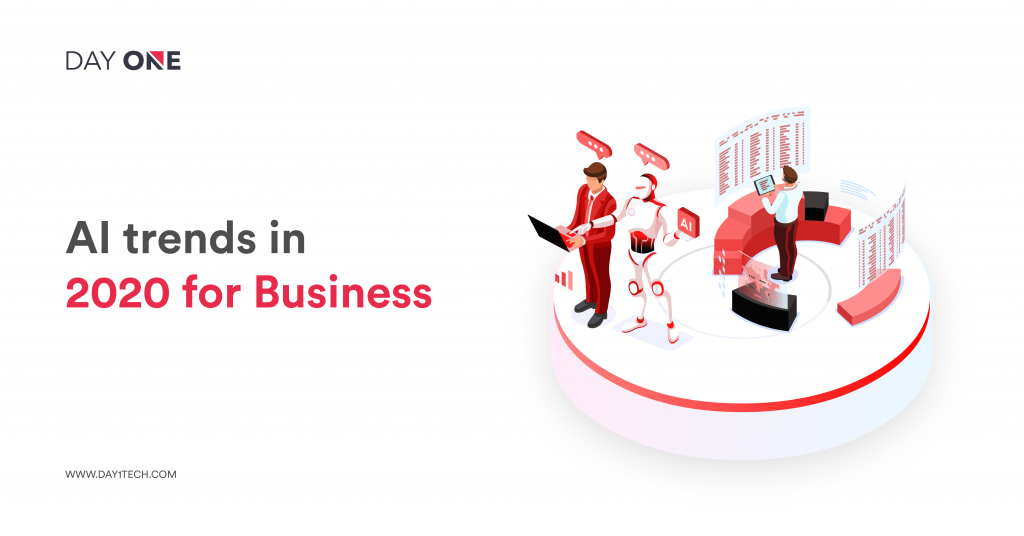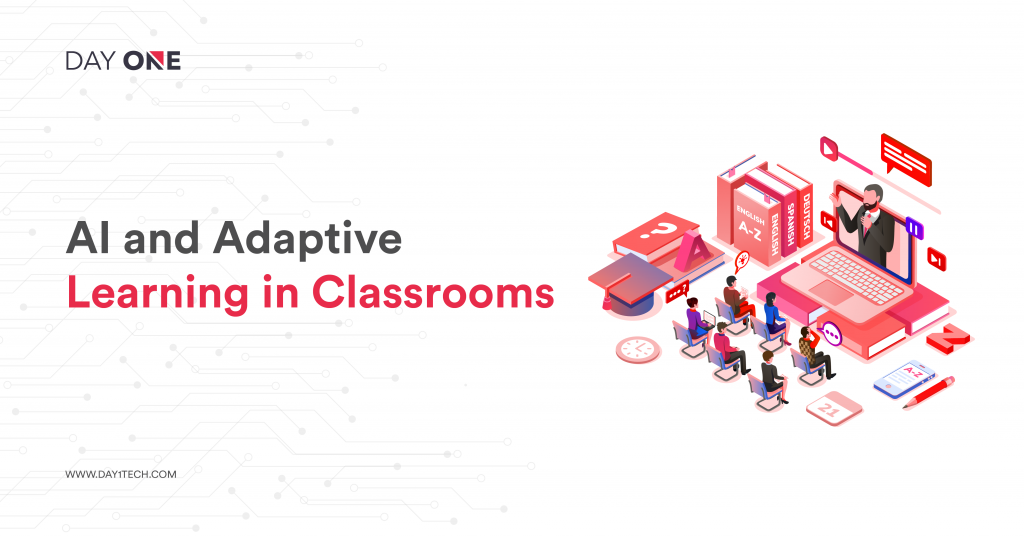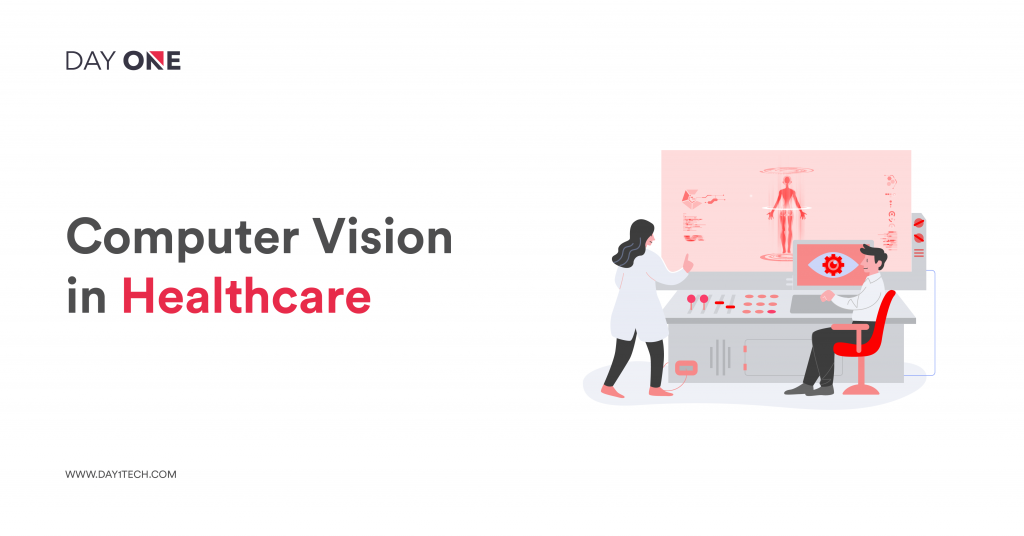7 AI Trends in 2020 that is set to change your organization’s future
admin
Artificial Intelligence
June 3, 2021
5 min read

Hello 2020! Just as the world was gearing up for this numerologically significant year, boom we have been hit by a pandemic like never before. We feel that. The changes we all have had to bring into our lifestyle and businesses is nothing less than epic. And what we do today, how we act together, is what will define our future. Artificial intelligence, as a superpower technology is what most businesses are looking up to for assistance in sailing through these troubled waters. And a quick look at the trends in Artificial Intelligence for 2020 and beyond, will tell us why it is so.
The interesting thing about Artificial Intelligence and related cognitive technology is that it is not ‘new’. That is, it is not something that the researchers and technologists have discovered some years back. It’s been discovered and played around with for some time now, but it is only in the last decade or so that it’s impact has been so widespread and phenomenal. The advent of smartphones, digital transformation, blockchain technology, narrowing global boundaries, lifestyles, mass migration, gen XYZ, the reasons are numerous. The world’s culture is transforming and with it is changing the ‘how’ of doing business, globally.
Let’s look at the top trends and the role of Artificial Intelligence in digital transformation in businesses.
Trends in Artificial Intelligence (AI) in 2020
Trend #1: Real-time Personalization with AI
At the heart of the AI implementation lies its ability to gather data, analyze it and learn from it. With the millions of data feeds machines receive on a daily basis, AI tools can effectively categorize and label them, and in turn learn from them to offer users solutions that they seek.
The concept of personalization found a new definition with brands like Amazon entering the e-commerce market and using AI powered recommendation systems to show users what would appeal to them. This makes it a win-win situation for both the buyer and seller, as the buyer gets what they want, and the seller makes a sale. This of course in turn has led to rapid growth in customer expectations as to what brands can offer them, for them.
Since then, it has not just been Amazon rolling the dice with personalization, but brands across industries leveraging the benefits of AI driven personalization for customers.
Trend #2: Facial recognition
You’ve used it in biometrics and now AI is giving facial recognition technology a grand facelift. Facial recognition is bound for impacting several businesses and processes across sectors. While retailers in China are using facial recognition for payments, it is estimated that nearly 72% of hotel operators in the U.S. are going to implement facial recognition by 2025 (Forbes) for processes like check-ins, and almost every airport will also be implementing it because of security reasons
With its growing popularity in education and healthcare, facial recognition is one of the most promising AI predictions for 2020. While in healthcare, it can help with prescription adherence, and with finding disoriented adults, in education it can provide better personalized content.
For example, Ellucian, a tech solutions provider has built a dashboard prototype that showcases the emotions of students during a lecture. The facial recognition tech was able to assess emotions to evaluate class engagement, making it convenient for educators to alter their teaching methodology to fit the sentiments of the students. The idea is to collect data over a period of time to draw better insights, so as to identify the learning styles of students and personalize learning material/style to create an optimal learning environment.
These programs however are still in its beta and testing stages and not all are ready to hit the market immediately. However, considering present ways of the world, with more education systems going the online path, it’s safe to assume that this would soon be a reality. AI chatbots in eLearning are already in place, and it is only time that other cognitive technologies make their presence felt.
In addition to that, there is also the advantage of using the tech for establishing law and order, i.e. in identifying the whereabouts of people.
Trend #3: AI at the “Edge”
If there is one AI technology that’s going to drive the manufacturing (and probably many other) sectors in the future it is Edge AI. But ‘what is Edge AI?’
Simply put, Edge AI relates to tech whereby data can be processed locally from hardware, without using a connection and usually through sensors. This is likely to emerge as a novel innovation bridging the gap between IoT and AI applications.
With AI Edge, algorithms are going to become more efficient and will run on low-power devices, analyze data at the ‘edge’ in real-time, and provide insights at nearly the same time. Companies like Apple and Microsoft are already leaning towards adoption of this new tech allowing mission and time-critical decisions to be made faster with more security. With these advancements, AI trends in business are directing towards a new wave when teams will have access to AI-powered insights even when network issues are present.
Trend #4: AI in Cybersecurity
Identity theft, phishing, and other forms of cyber breaches have led to increased concerns about data privacy and security. According to the Technology Convergence and the Smart Home report by Parks Associates, U.S. broadband households currently own more than 10 connected devices. With the advent of 5G and super-fast wireless connectivity, the number of connected devices owned by an average household is set to increase and companies would even try to leverage 5G connectivity. However, this also means these companies will be more susceptible to cyber breaches and phishing attacks. As traditional systems of detecting advanced malware will no longer be effective, businesses are likely to turn to AI for cybersecurity. Machine learning algorithms are becoming more efficient at identifying anomalies in data patterns and can raise alarms before systems are breached.
Trend #5: AI for intelligent user experience
With the development of artificial intelligence, it is inevitable that AI will influence UI/UX. We are moving towards a world with ‘thinner interfaces’. The ‘thinness’ of an interface essentially refers to the number of hindrances a user has to navigate, in order to reach her/his goal. The thinner the interface, the lesser the hindrances to pass through.
To illustrate, using Amazon Echo for checking appointments or booking meetings is a thinner experience than going to your laptop, opening your Gmail, and checking your calendar for the same purpose. If there is one AI trend to watch in 2020 with reference to UI/UX designing, it is how devices and brands simplify interactions with users.
Providing a thinner experience for consumers is already the order of the day. Devices such as Google Home, Amazon Alexa are using AI technologies for better user experiences. With the use of ML algorithms, one can even ask Alexa to perform multiple tasks. These interfaces are primarily driven by a confluence of AI technologies, essentially natural language processing, natural language generation, and gesture control.
In short, this year will not be one where the elements of design, development and technology will function independently. It’s the year we will witness collaboration and how AI technology impacts UI/UX design.
Trend #6: AI for Predictive Analytics
It’s probably one of the most accepted facts, but cost savings is a priority for all businesses. And not just considering current economic slowdown and scenario, but always. Who doesn’t want to save some more money, right?
By deploying AI in market analysis businesses will be able to detect trends and patterns that will affect their day-to-day operations. Also known as augmented analytics, businesses can get insights into several processes and optimize their operations such as supply chain and energy consumption optimization. This trend is particularly going to affect the retail market. Other markets that stand to benefit from the same are surveillance, manufacturing, and shipping.
Trend #7: Monitoring business processes
One of the biggest AI software trends that has revolutionized business operations completely is the integration of Robotic Process Automation and AI. Essentially, robotic process automation is the introduction of software bots to businesses processes to automate their operations which are mundane and repetitive in nature allowing businesses to save time and money while maximizing efficiency. Filling forms, generating reports, invoice processing are some of the tasks which can easily be done by the software bots.
Future of AI Technology
We are looking at an AI-enabled ecosystem in the near future where AI-enabled machines can communicate, exchange, analyze information and understand human speech and cater to a goal without any human intervention. For an ecosystem of such nature, AI systems should have the ability to incorporate different perspectives. With different Artificial Intelligence solution providers coming up with their own solutions, a scenario will develop where a clearinghouse will be developed which will connect independent and separate AI applications.
Explore More Blogs
Testimonials What customers have to talk about us
Finch (previously Trio) – Growth with Investing, with benefits of Checking
Reading Time: < 1 minThe Finch (previously Trio), one of our clients today has reached this level with our expertise and with a great team of developers in Day One, who have made every stone unturned in making this project a big success.
Neel Ganu Founder
USA
Vere360 – VR based Immersive Learning
Reading Time: < 1 minDay One helped Vere360 “fill skill gaps” and build a platform that would cater to their niche and diverse audience while seamlessly integrate the best of #AI and #VR technology.
Ms. Adila Sayyed Co-Founder
Singapore
1TAM – Video Blogging Reimagined
Reading Time: < 1 min‘1TAM’ was only for iOS with gesture-based controls, advanced video compression techniques, and a simple architecture that allowed actions to be completed in 2-3 taps. The real challenge for ‘1TAM’ was to keep it distinct which bought brilliant results with all the strategies and approaches implied for best video compression techniques.
Anwar Nusseibeh Founder
UAE
Fit For Work – The Science of Workplace Ergonomics
Reading Time: < 1 minDay One Technologies came with the expertise that was required and helped in building a platform that is edgy, functional, and smart, delivering engagement and conversions at every step.
Ms. Georgina Hannigan Founder
Singapore
SOS Method Meditation for ‘Busy Minds’
Reading Time: < 1 minDay One Technologies helped in building an innovative mobile app (for #iOS and #Android) that’s easy-to-use, engaging, and data-driven to help users reap the most at every point.





